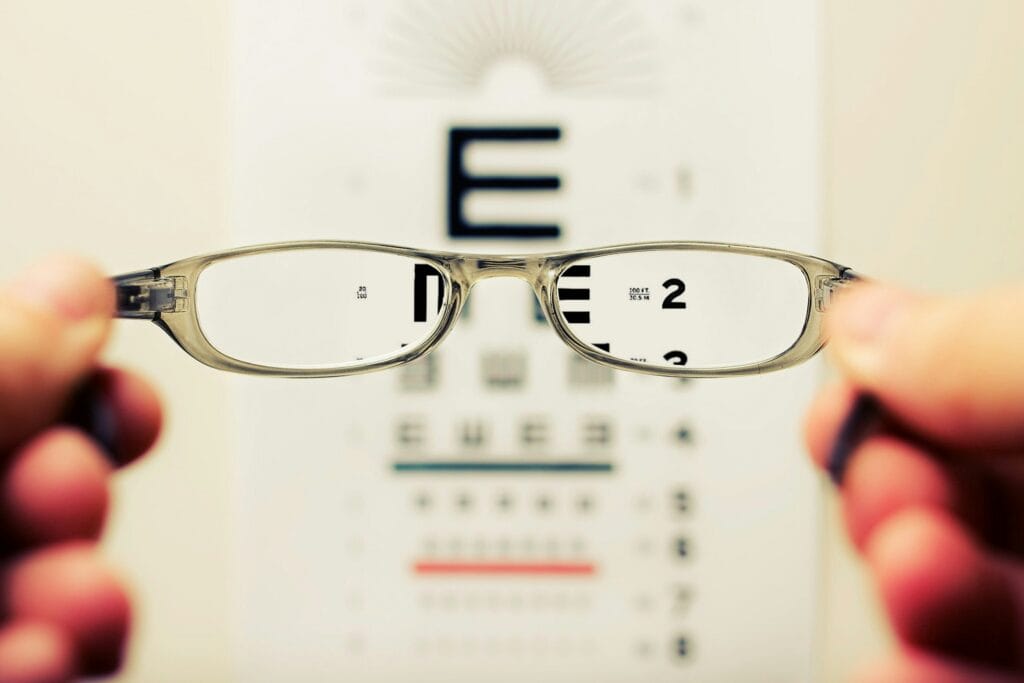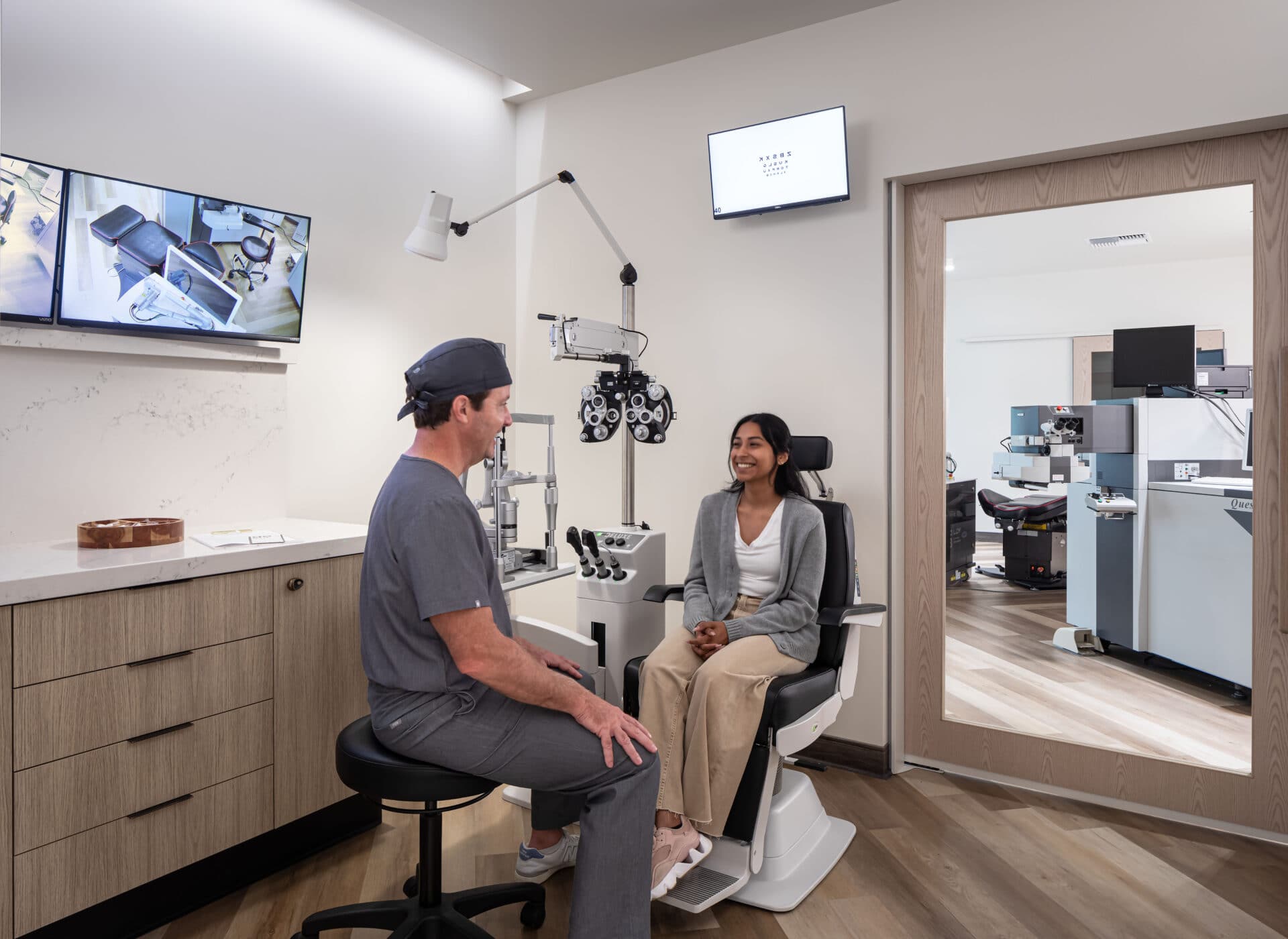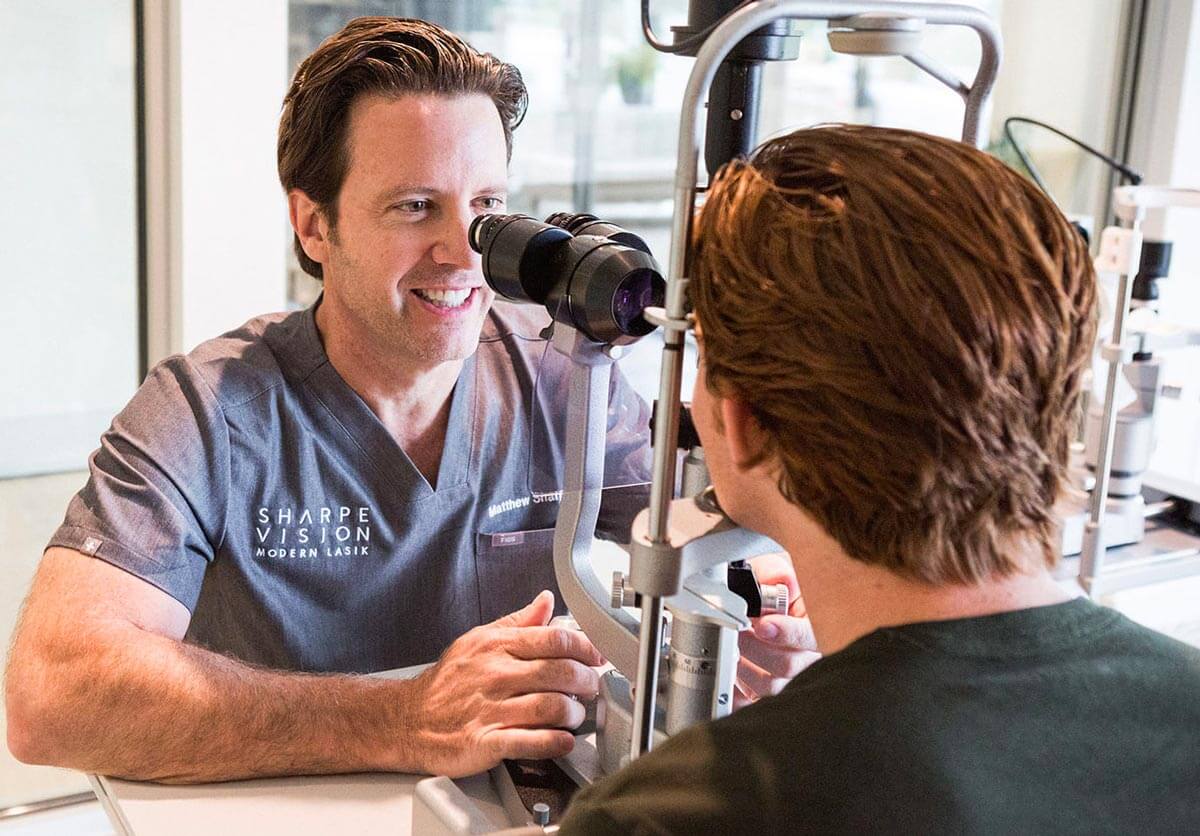
What Does 20/15 Vision Mean?
What Does 20/15 Vision Mean? A Closer Look at Superior Visual Acuity Vision is the most treasured sense, enabling us to perceive and interact with the world around us. Most people are familiar with the […]

Presbyopia: It happens to everyone over 45 years old (give or take a couple years). Monovision: The fancy name of the laser surgery that treats one eye for distance vision & one eye for near.
LASIK/PRK surgery for presbyopia, called Monovision, is a procedure that involves the use of a laser to correct your vision for both near and farsightedness. Unlike standard LASIK/PRK procedures, Monovision involves using the laser to adjust each eye’s cornea to a different shape. The cornea in the non-dominant eye is adjusted to see up-close, while the cornea in the dominant eye is corrected to see distance.
Monovision is customizable according to your needs: Your doctor can reduce the near vision correction according to your lifestyle, if you find the standard monovision challenging. You can even do a touch-up in the future if your vision changes.
Laser presbyopia surgery is a favorable option for most as it eliminates the need to use glasses and contact lenses, which can be inconvenient and even unsafe. However, most doctors recommend patients try Monovision contact lenses and bifocal glasses before undergoing presbyopia surgery to see whether they can adjust to Monovision vision correction.
Until recently, the only way of using laser technology to correct presbyopia was in refractive lens exchange or lens refractive surgery, where an ophthalmologist would replace your eye’s clear natural lens with an artificial intraocular lens (IOL) to correct the refractive error and achieve sharper focus. While this is effective at reducing the need for reading glasses or bifocals, these types of procedures are invasive and thus not as safe as laser surgery for presbyopia. This also means the recovery period is much longer.
The main consideration with presbyopia surgery is often the adaptation time after the procedure. Healing time is usually short, but it may take a few weeks up to a few months for the brain to adjust to monovision. It may be strange for the patients at first, but it works quite well for most. However, one of the main advantages of the procedure is that it is reversible, but at SharpeVision, we rarely need to perform a reversal.
It’s possible for the eyes to develop monovision naturally, where one eye already sees better up close. This can help a person avoid or delay using other types of monovision correction when they do develop presbyopia. However, most people find they need presbyopia correction interventions—approximately 9.6 million people in the United States.

There’s a moving part in our eye called the crystalline lens. The lens is clear, about the shape of an M&M candy, and sits behind the colored part of our eye (the iris). Our lens flexes when we change focus from distant objects to near objects. In our mid-40s, this lens decreases in flexibility to the point that we have increasing difficulty seeing near objects. When this happens, glasses with bifocals help us focus on near objects, such as a book or computer. While there is no current technology that can restore this flexibility, we will demonstrate an option called monovision, which can help us see both distant and near objects without reading glasses. This is a great way to be able to see without readers. With monovision, one eye (usually your dominant eye) focuses far away, and the other focuses up close. We will demonstrate this for you during your exam, and you can try it with contacts, too. It is not an option for everyone, but for many people it is a convenient way to see near and far without dependence on glasses. There is usually a period of adjustment, and if you decide it doesn’t suit you, the procedure can often be reversed for distance vision. We’ll discuss this important option with you in detail during your exam.
We understand that this procedure may create nervousness and fear. We’ve worked very hard to make it easy for you. We offer an oral sedative to help you relax, and we encourage you to take it if medically appropriate. We want your experience to be as comfortable as possible. All of your post-operative appointments will be scheduled before your procedure, so you can simply go home when the procedure is complete. Your surgeon will gently talk you through each step of the process, so you know what you will feel, see, and hear. He monitors your eye through the microscope at all times. The entire procedure takes about three minutes per eye; the first laser takes 20 seconds. The second laser takes 10-50 seconds depending on the amount of your prescription.
Immediately following the procedure, you will notice a change in your vision. It’s always foggy at first, but most people can see well enough to read a clock from across the room. Your eyes will be numb for 15-25 minutes; then they will start to water and burn. After LASIK, this discomfort usually lasts 4-5 hours. To help with the burning, we supply you with “comfort drops” that have numbing medicine and artificial tears in them. After being driven home, place a cool compress on your eyelids to relieve any discomfort. Try to sleep or rest with your eyes closed. You may resume normal activities the same or following day. You can lift and exercise, but do not rub your eyes. Your vision may still be foggy; this is a normal part of your healing process and will clear in the days and weeks following the procedure. Most people see well enough to work the next day.
It really isn’t! Unlike most surgeries that require painful injections or nerve blocks to numb an area, all it takes to numb your eyes for LASIK are specialized numbing drops. You won’t feel any pain during the procedure, but what you will feel is some pressure, even with loads of numbing eye drops. Once in a while, someone will say that they felt a lot of pressure. Most everyone is apprehensive about the procedure, and I can certainly understand since I have also been under the laser. To help with this, we’ll offer you a mild sedative to calm your nerves, or you can choose to have beer or wine in Austin and Chicago in lieu of a sedative. And remember, our surgeon will talk you through the procedure from start to finish to make sure you’re not startled and know what’s coming next. It’s about 3 minutes per eye, 6 minutes total. We do our best to make it as easy and comfortable as humanly possible.
We accept most insurance plans, and they vary by state and sometimes year to year, so be sure to ask when you come in. Most insurance/vision plans do not pay towards LASIK, PRK, ICL & RLE, but we do honor the discount from EyeMed, VSP, and Davis, so that if you’re a member, your out of pocket expense will be the same. Always check with your insurance carrier or health benefits administrator before coming in for your exam.
No one ever has. However, LASIK is a surgical procedure and does have risks that vary by your age, prescription, and numerous other factors. Please see “risks of laser surgery” above.
Yes, and we encourage it! You can use your Health Savings Account (HSA) or Flexible Spending Account (FSA) as payment for your surgery. This program allows you to put tax-free money from your earnings into an account that can be used to pay for medical expenses including LASIK, PRK, and ICL. It’s like getting a discount equal to your tax rate, for example: If your employment earnings are taxed at 20% and you LASIK cost is $3000, you will actually need to earn $3600 to pay for your surgery. Conversely, if you place a portion of your earnings into a HSA/FSA, that money will not be taxed like the rest of your paycheck, and you will only need to earn $3000 for your surgery. It’s like getting a 20% discount! I am such a fan of this program, and we try to educate all of our patients about this payment option during their consult.